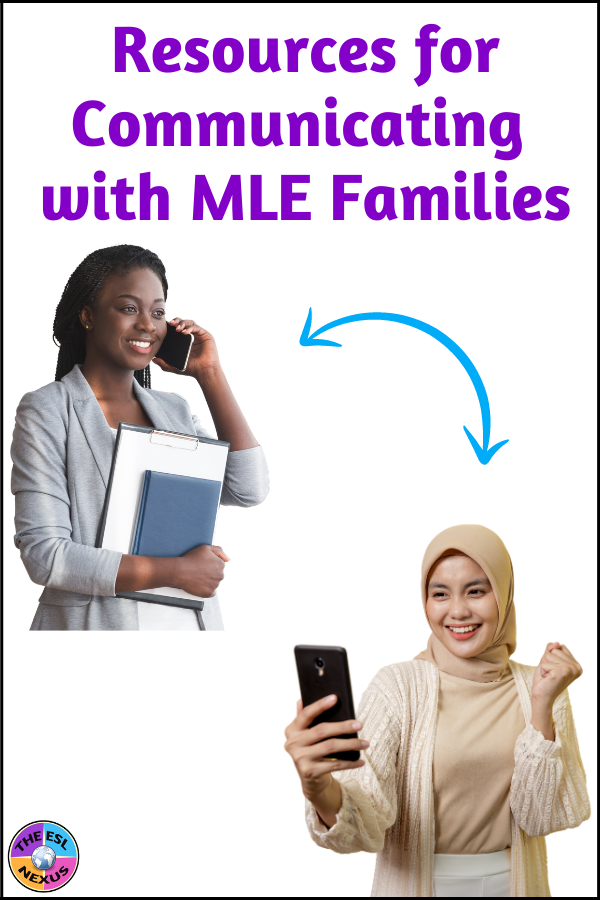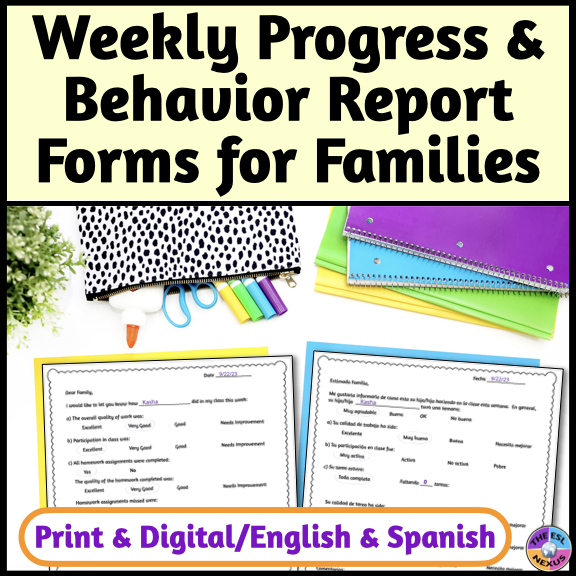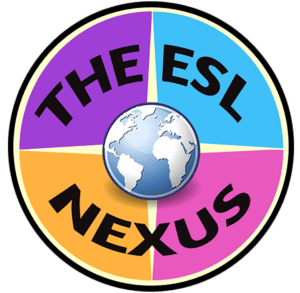It can sometimes be a challenge to communicate with ELL families. I once tried to have a conversation with the Turkish mother of a student who didn’t speak English. We used Google Translate and, as many of you know, Google Translate is not always accurate. She and I could tell when it wasn’t translating correctly because some of the translations didn’t make sense. But we laughed and since were able to get our ideas across to each other, that ultimately was all that mattered.
In this blog post, I’ll offer a brief review of why it’s so helpful to have good communication with the families of your MLEs and list some apps for facilitating conversations. I’ll also share a resource that helps you maintain good communication with the families of your students.
 |
| This TPT resource fosters communication between teachers & families; graphic by The ESL Nexus |
The Importance of Fostering Good Communication with Families of English Language Learners (ELLs)
* It establishes trust between school and family: Talking with families about how their children are doing helps them stay informed about what’s going on in the school.
* It amplifies student success: Lots of research has shown that the more involved parents and guardians are with their children’s education, the more successful the students are.
* It prevents potential misunderstandings: Regular contact helps ensure that when families have questions, they know they can reach out to you. And when you’ve established open lines of communication with positive messages sent home, families will be more willing to accept what you’re saying if it’s something negative.
6 Free Apps to Communicate with ELL Families
The apps in the list below were recommended by teachers in Facebook groups and I also researched them myself. However, I haven’t actually used any of them with families so I can’t guarantee how accurate they are. Click on the titles for more info about each app.
* Class Dojo
Offers over 35 languages; includes more than just communication features.
* Microsoft’s Bing Translator
Offers 136 languages for text translation, fewer for speech; also offers translation of images for some languages.
* Remind
Offers 90+ languages; free for users in the U.S. and Canada and can be used on phones and computers.
* Seesaw
Offers over 100 languages; the premium version offers more features.
* Talking Points
Offers 150+ languages; web and mobile versions available.
* Talking Translator – Languages
Offers 100+ languages; for Android phones only.
Resource for Communicating with Families of Multilingual Learners of English
Another way to maintain good communication is by sending home weekly reports that update families on how their children are doing in your class. Once, I forgot to send it home and a parent actually emailed and asked where it was! It’s a 1-page form that is really quick and easy to fill out.
 |
| Get this resource HERE; graphic by The ESL Nexus |
The forms are in Spanish as well as English. If you need it translated into other languages, you might be able to use the DeepL app, available for phones and computers, which translates written documents into 33 languages. The free version limits the number of translations you can do per month but teachers in Facebook groups recommended it.




